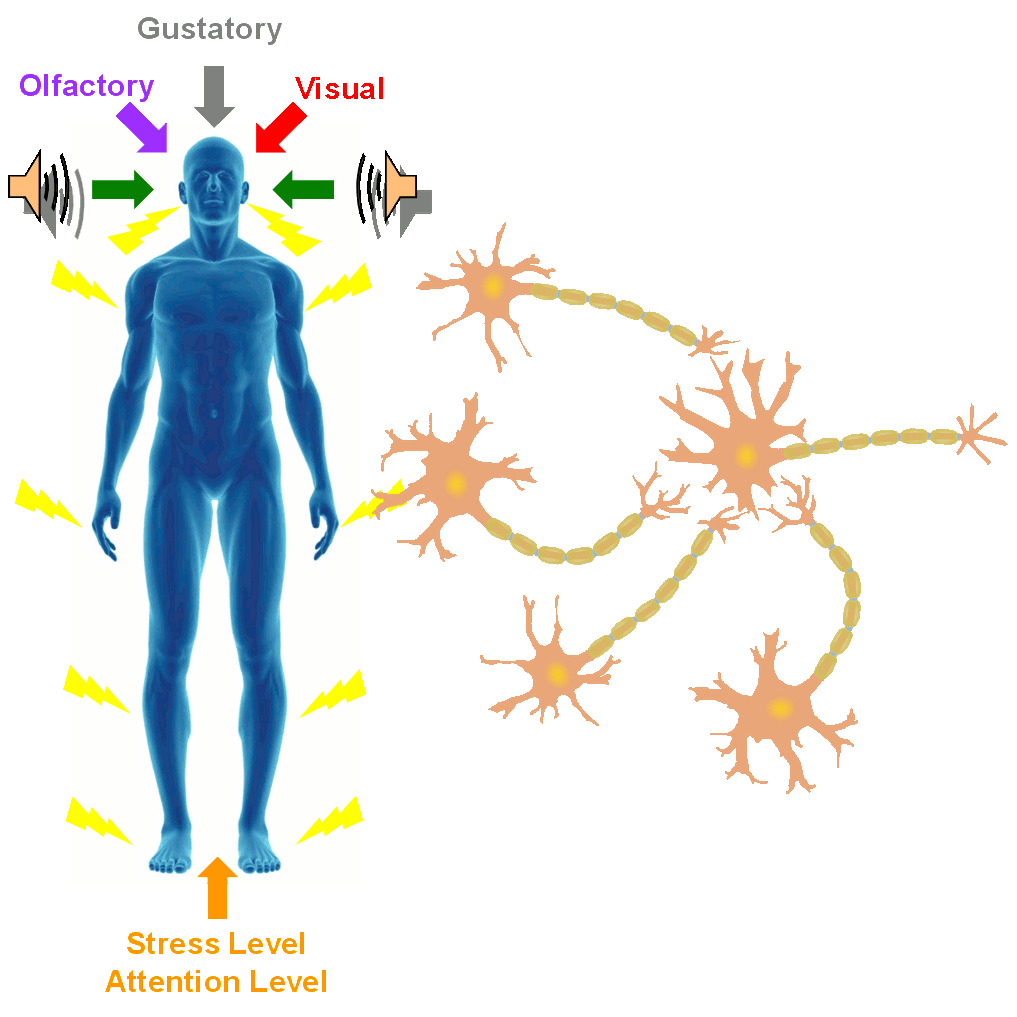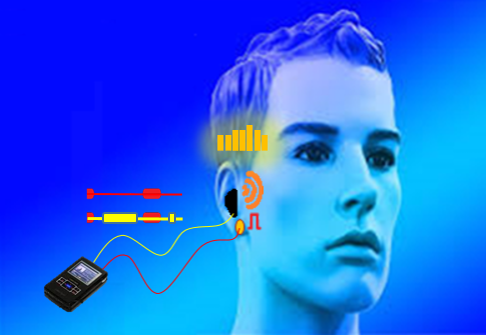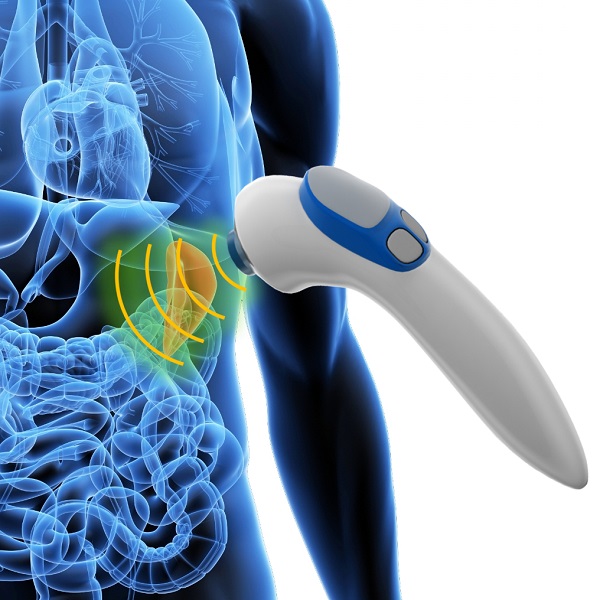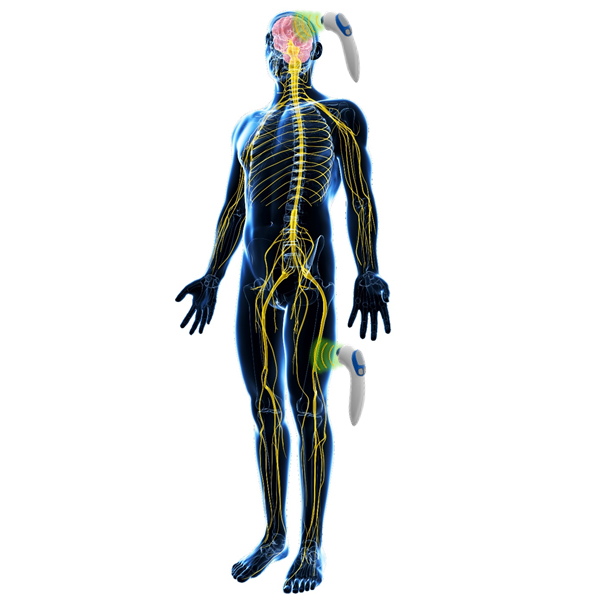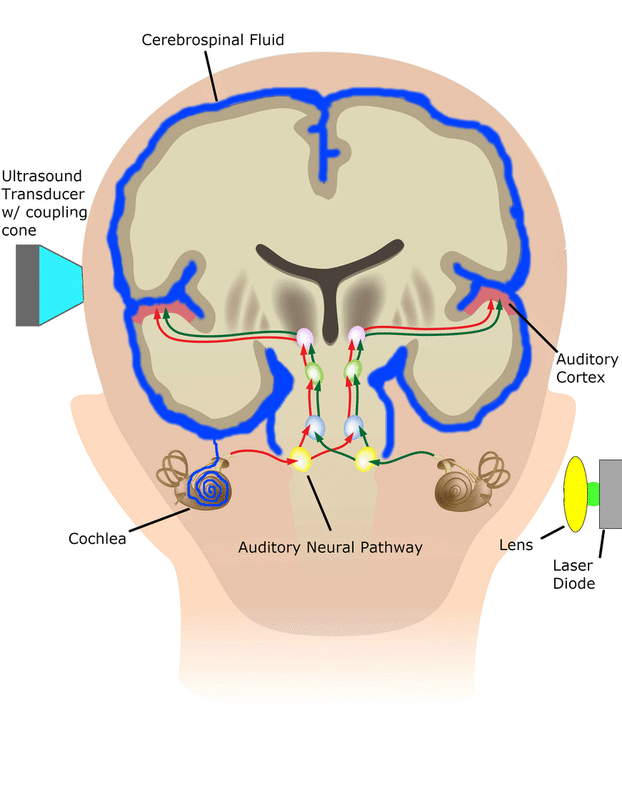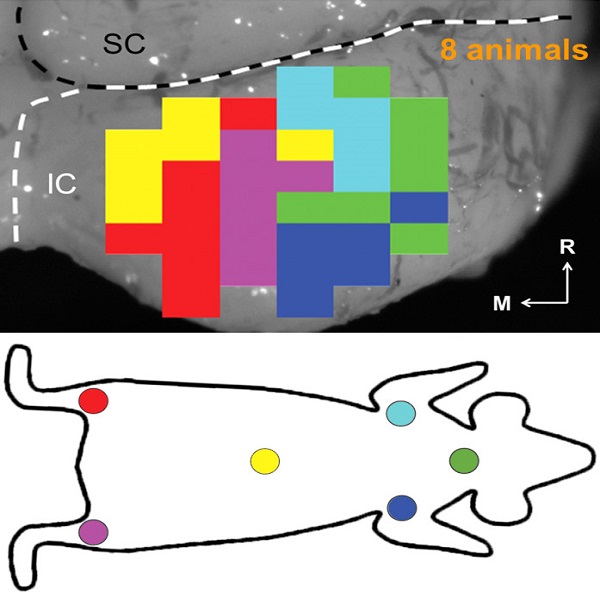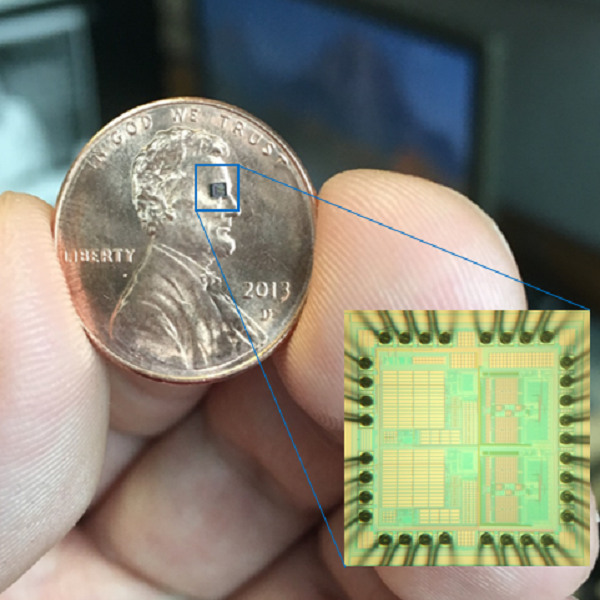Autonomic and Peripheral Neural Recording and Stimulation
Ultrasound
We are excited to announce that our company collaborators at Ultran have won a $3.35 million DARPA SBIR award toward their research partnership with the SONIC Lab. The teams at UMN and Ultran are collaborating to create a new startup, SecondWave, to commercialize a novel, wearable ultrasound technology. SecondWave is a medical device startup company developing an ultrasound-based wearable platform product suite for neuromodulation and end-organ stimulation. We are leveraging advanced technology to build low cost non-invasive devices, reducing drug use and providing new and effective methods of treatment.
Collaborators: Ultran Group, SecondWave Systems.
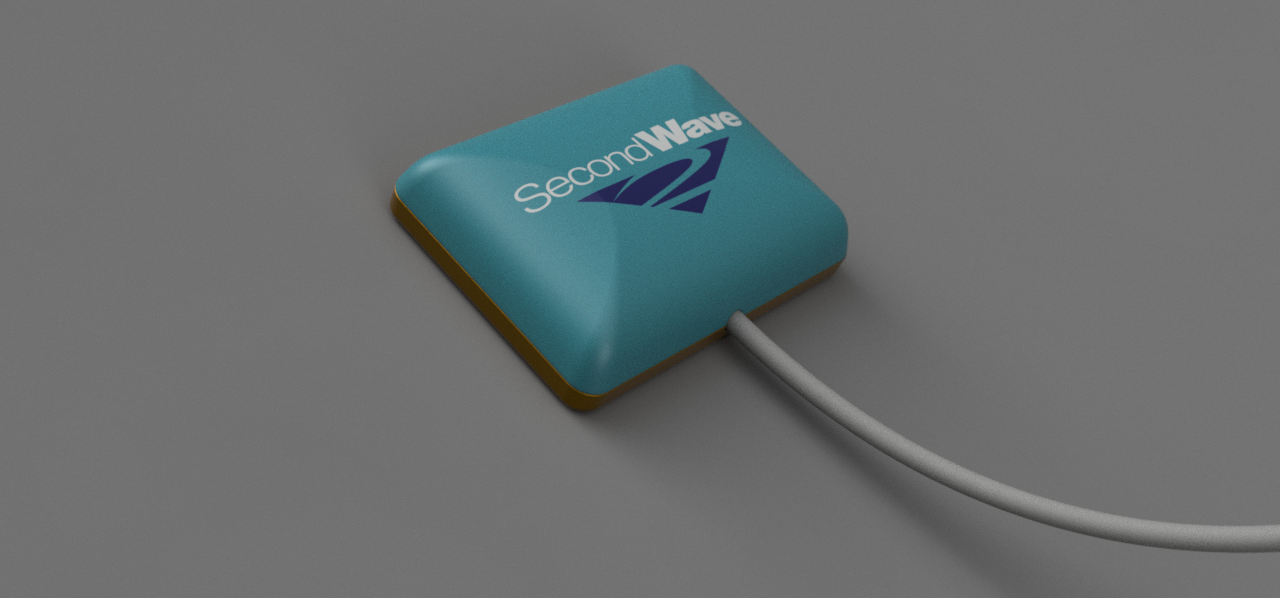
Electrical
We are collaborating with the NeuroElectronics lab led by Dr. Zhi Yang at the University of Minnesota to develop autonomic and peripheral neural interfaces for neuromodulation applications. The NeuroElectronics lab has developed high performance “Bioelectronics Medicine” devices that can allow low-noise recording and precise modulation of neural signals traveling through a nerve and its fascicles using epineural surface electrodes. The fundamental premise of “Bioelectronics Medicine” is that effectiveness of neuromodulation therapy can be monitored and optimized in each patient by applying controlled amounts of charge into the nerve while monitoring the neural response from the treated organ or system. While existing neural amplifier technology has sufficient input-referred noise characteristics for resolving action potentials in brain recordings, it is inadequate for resolving small neural signals (typically less than ten microvolts) from noise sources in cuff electrode interfaces on autonomic nerves. Penetrating electrodes can improve the signal quality at early time points; however, the signal will decay over time due to foreign body response and micro-motion of the tethered electrodes relative to the soft tissue. In addition, electrical stimulation produced by adjacent electrodes on the same nerve generates large noise and recording artifacts that can be several orders of magnitude larger than the spontaneous nerve activity, making it extremely challenging to perform simultaneous stimulation and recording on autonomic nerves, especially when the stimulating and recording electrodes need to be positioned close to each other. We are interested in using novel neural interfacing with the “Bioelectronics Medicine” devices to help treat neurological disorders by monitoring neural responses to neuromodulation therapy. NeuroElectronics Lab
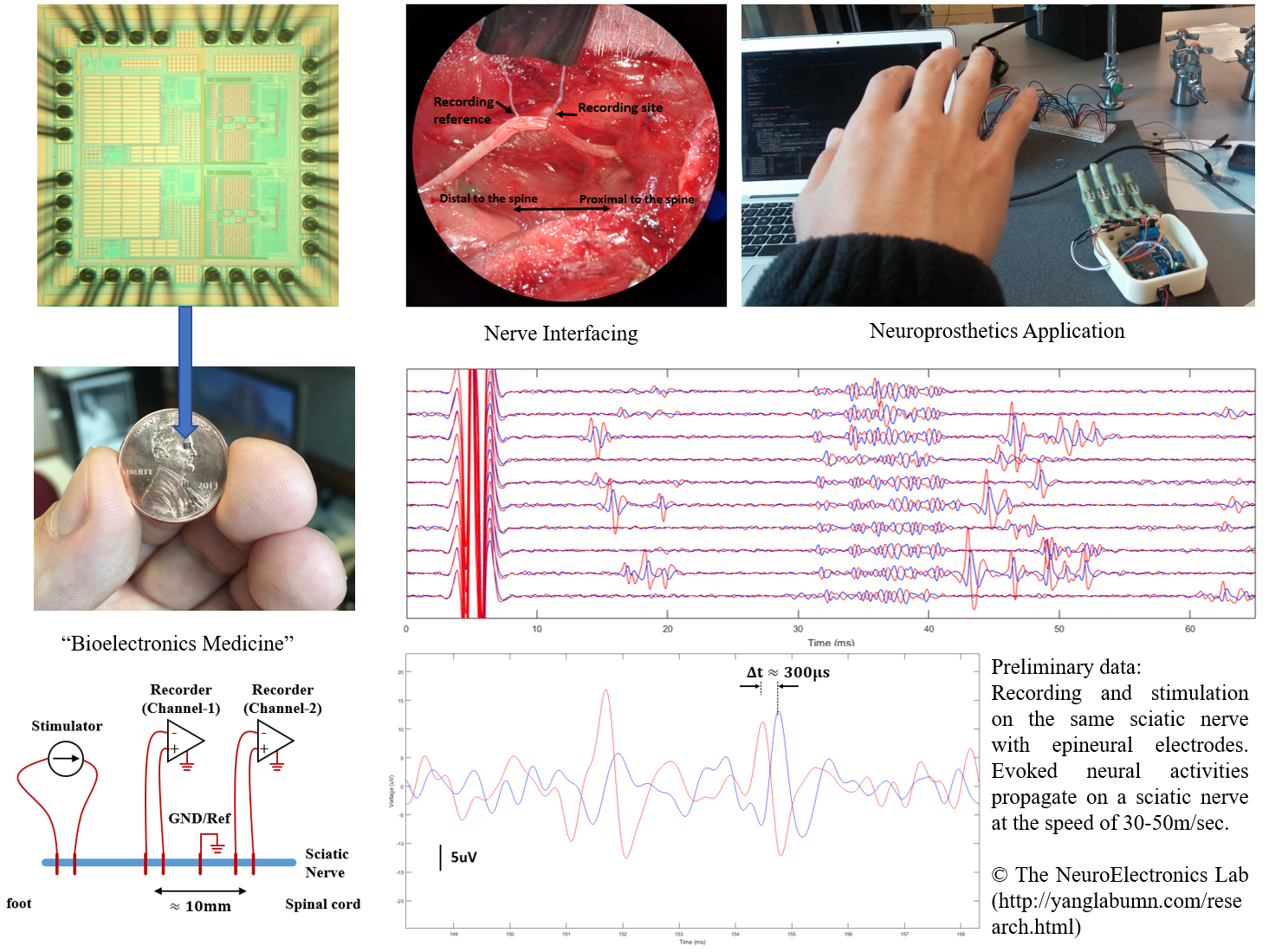
Collaborators: Zhi Yang, PhD (Biomedical Engineering, University of Minnesota)

